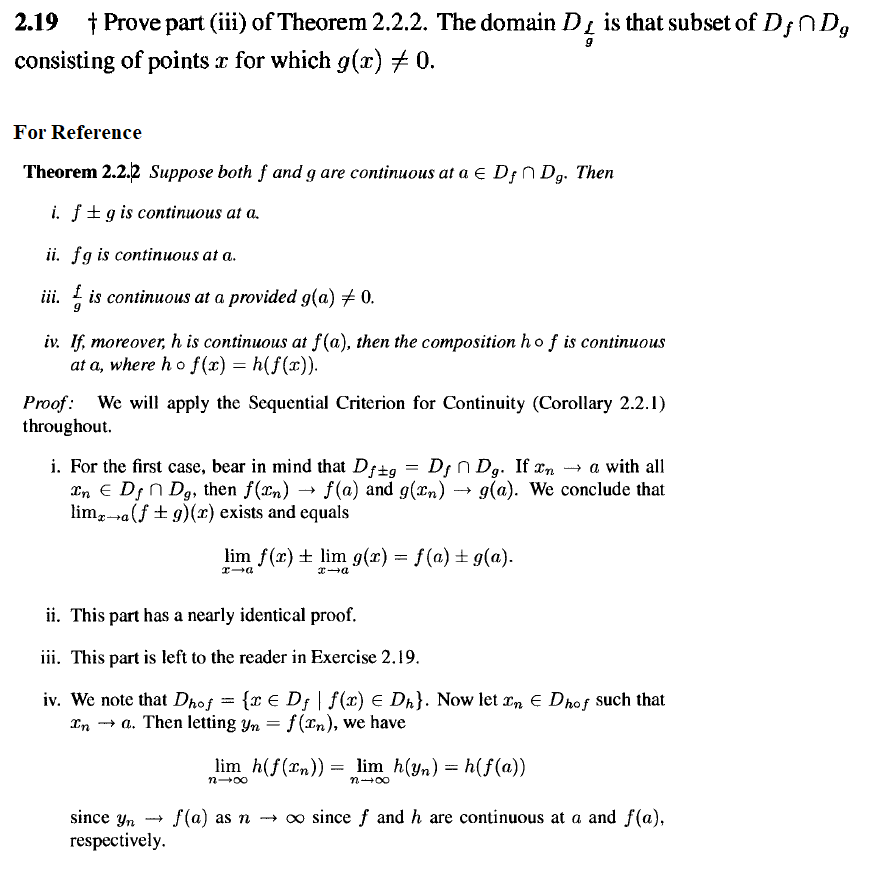iii. is continuous at a provided g(a) # 0.
Linear Algebra: A Modern Introduction
4th Edition
ISBN:9781285463247
Author:David Poole
Publisher:David Poole
Chapter6: Vector Spaces
Section6.5: The Kernel And Range Of A Linear Transformation
Problem 30EQ
Related questions
Question

Transcribed Image Text:2.19 † Prove part (iii) of Theorem 2.2.2. The domain D is that subset of D;ND,
consisting of points x for which g(x) + 0.
For Reference
Theorem 2.2.2 Suppose both f and g are continuous at a e D;n Dg. Then
i. f+gis continuous at a.
ii. fg is continuous at a.
iii. is continuous at a provided g(a) # 0.
iv. If, moreover, h is continuous at f(a), then the composition ho f is continuous
at a, where ho f(x) = h(f(x)).
а,
Proof: We will apply the Sequential Criterion for Continuity (Corollary 2.2.1)
throughout.
i. For the first case, bear in mind that Df±g = Df n Dg. If xn → a with all
an E D; n Dg, then f(n) → f(a) and g(an) → g(a). We conclude that
lim,-a(f + g)(x) exists and equals
lim f(x) + lim g(x) = f(a) ± g(a).
ii. This part has a nearly identical proof.
iii. This part is left to the reader in Exercise 2.19.
iv. We note that Dhof = {x € Df | f(x) E Dh}. Now let rn E Dhof such that
In - a. Then letting yn = f(In), we have
lim h(f(rn)) = lim h(yn) = h(f(a))
I|
n-00
n+00
since yn --
f(a) as n -→ o since f and h are continuous at a and f (a),
respectively.
Expert Solution
This question has been solved!
Explore an expertly crafted, step-by-step solution for a thorough understanding of key concepts.
Step by step
Solved in 2 steps with 2 images

Recommended textbooks for you

Linear Algebra: A Modern Introduction
Algebra
ISBN:
9781285463247
Author:
David Poole
Publisher:
Cengage Learning

Algebra & Trigonometry with Analytic Geometry
Algebra
ISBN:
9781133382119
Author:
Swokowski
Publisher:
Cengage


Linear Algebra: A Modern Introduction
Algebra
ISBN:
9781285463247
Author:
David Poole
Publisher:
Cengage Learning

Algebra & Trigonometry with Analytic Geometry
Algebra
ISBN:
9781133382119
Author:
Swokowski
Publisher:
Cengage
